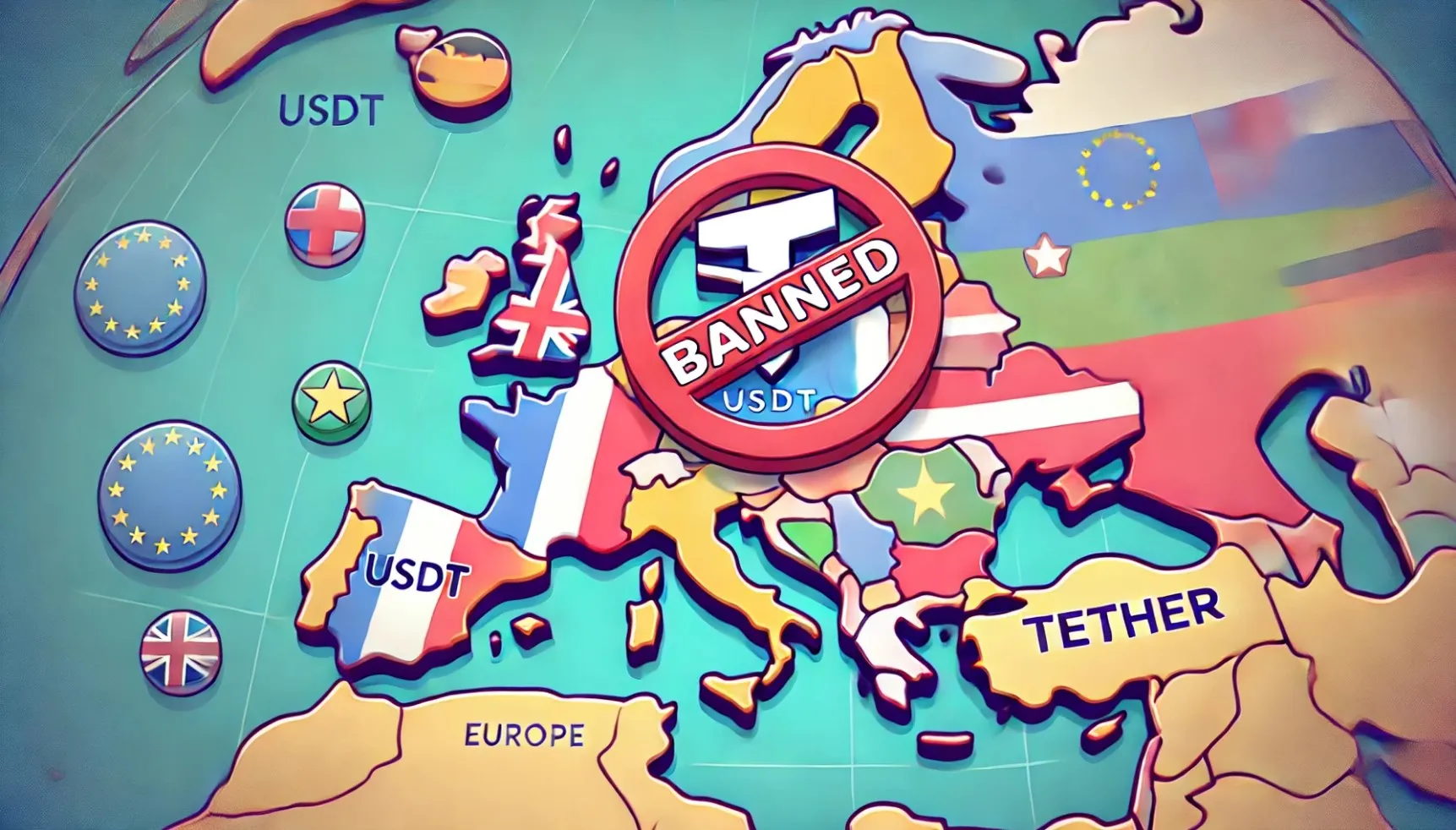Stablecoin USDT, issued by (and also known as) Tether, is currently banned in the EU. This does not, however, mean that crypto users cannot purchase USDT. It is still available on most major exchanges, but this is precisely what might change as the new EU regulation, MiCA (Markets in Crypto-Assets), officially enforced across all Member States as of 30th of December 2024, begins to take effect. MiCA represents one of the most comprehensive regulatory frameworks for cryptocurrencies and digital assets in the world, aiming to bring stability, transparency, and accountability to the booming European crypto space.
In this article, we take a look at USDT (Tether) and the benefits and controversies surrounding this popular stablecoin, why Tether has been banned in the EU, and whether there are similar alternatives for European crypto users.
What are stablecoins?
Stablecoins function in a similar way to cryptocurrencies in that they are created on the blockchain and are bought, traded and sold on the crypto market. The difference between most stablecoins and other cryptocurrencies such as Bitcoin, Ethereum, Solana, and Cardano, however, is that the value of stablecoins is pegged to a stable asset, such as a fiat currency like the U.S. dollar (as is the case with USDT), euro, or commodities, such as gold.
This pegging mechanism aims to reduce price volatility, making stablecoins more suitable for transactions, savings, and as a form of exchange compared to traditional cryptocurrencies that undergo significant and unpredictable fluctuations in value.
In countries with volatile national currencies, stablecoins can serve as a safeguard against financial uncertainty. Research has shown rising stablecoin adoption in countries such as Argentina and Nigeria, which suffer from highly unstable economies, and use cases such as cross-border remittances, offering faster and more affordable alternatives to traditional banking and transfer rails.
What’s USDT’s story?
USDT has been used widely across Europe and the world for years. But it has also been at the center of controversy due to questions regarding transparency. Stablecoins are expected to maintain a 1:1 peg to their underlying assets, ensuring stability and reliability for their users. However, analysts have long suspected that this may not be the case with Tether. In 2021, Tether reached a settlement with the New York Attorney General (NYAG) following an investigation into its reserve claims and agreed to pay an $18.5 million fine. The company has also faced criticism for its lack of independent audits. Despite promises to conduct comprehensive audits, the company has so far provided only attestations, which are limited in scope. This lack of transparency has, therefore, fueled skepticism among regulators and market participants.
Why is Tether (USDT) banned in the EU?
The reason behind Tether (USDT) being banned in the EU stems from concerns surrounding its compliance with the MiCA regulations. The EU has raised concerns regarding the lack of transparency in Tether's reserve backing, which has been a point of contention among regulators around the world for a while.
Questions about whether USDT is fully backed by equivalent reserves at all times, along with Tether’s past legal and regulatory challenges, have prompted EU authorities to put their foot down and effectively ban its official circulation within the region. While European residents are still able to purchase, trade, and store USDT, using USDT for institutional purposes may be more challenging should Tether fail to comply with MiCA.
Are there stablecoin alternatives in the EU?
Similar alternative stablecoins for European residents could include USDC, another stablecoin also pegged to the U.S. dollar, which already complies with the MiCA regulations. USDC, also known as USD Coin, is issued by a company called Circle and is available natively on ten blockchains: Ethereum, Solana, Avalanche, TRON, Algorand, Stellar, Flow, Hedera, Base, and Optimism.
As opposed to USDT, USDC is known for its transparency, as Circle issues regular reports conducted by independent accounting firms to verify that its reserves fully back the circulating supply of USDC. Other stablecoins, such as EURC (pegged to the euro), also issued by Circle, will provide other alternatives for European crypto users that comply fully with MiCA regulations and cater to the growing demand for stable, fiat-pegged digital assets in the EU.
For more information on investing in crypto, how to use Limitlex, or to open a trading account with us, visit www.limitlex.com.



